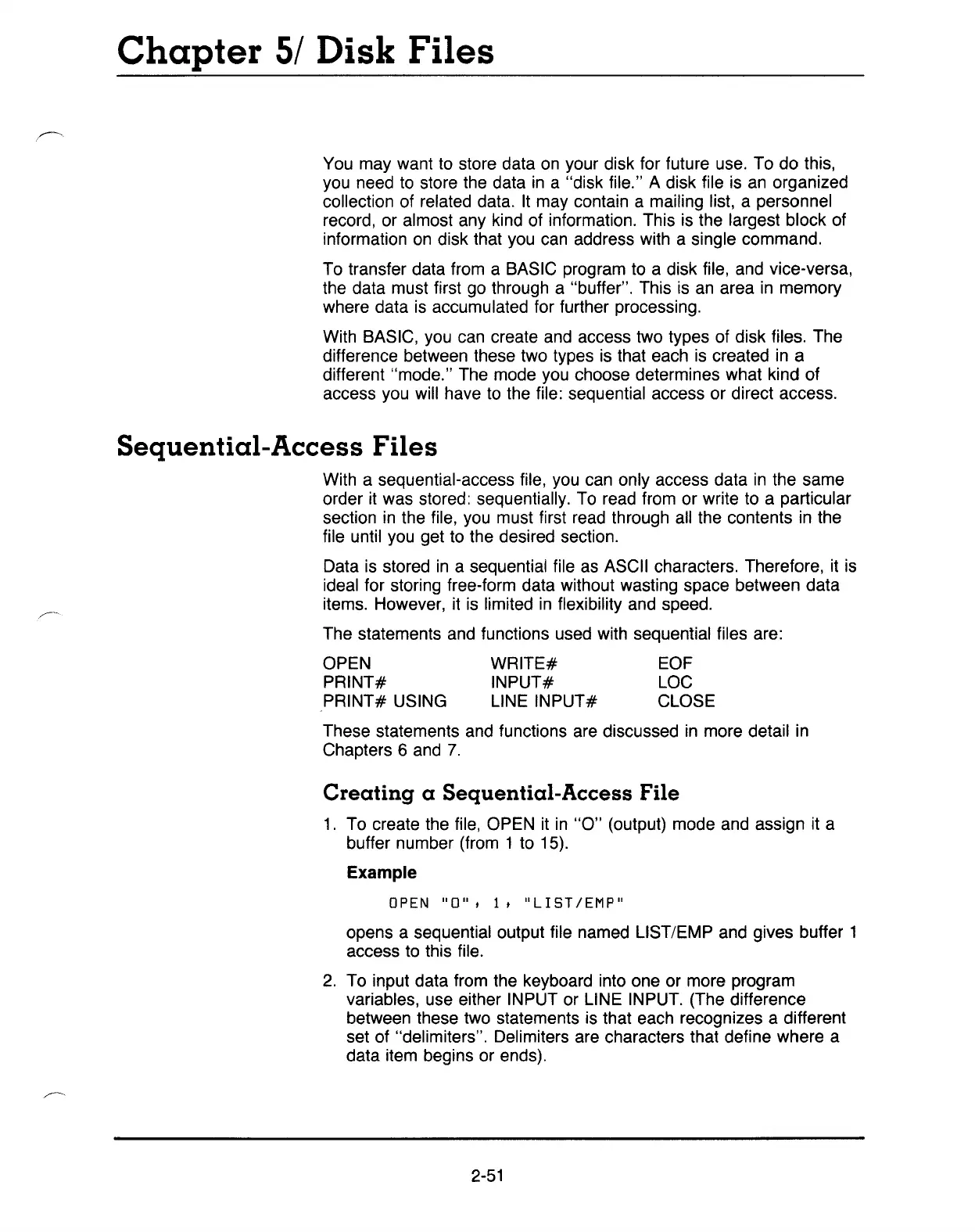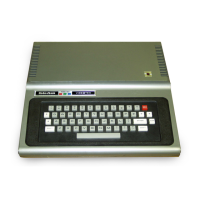Chapter
5/
Disk Files
You may want to store data
on
your disk for future use. To do this,
you need
to
store the data
in
a "disk file." A disk file is
an
organized
collection of related data.
It
may contain a mailing list, a personnel
record, or almost any kind of information. This is the largest block of
information
on
disk that you
can
address with a single command.
To transfer data from a BASIC program to a disk file, and vice-versa,
the data must first go through a "buffer". This is
an
area
in
memory
where data
is
accumulated for further processing.
With BASIC, you can create and access two types of disk files. The
difference between these two types is that each
is
created
in
a
different "mode." The mode you choose determines what kind of
access you will have
to
the file: sequential access or direct access.
Sequential-Access
Files
With a sequential-access file, you can only access data
in
the same
order it was stored: sequentially. To read from or write to a particular
section
in
the file, you must first read through all the contents
in
the
file until you get to the desired section.
Data is stored
in
a sequential file
as
ASCII characters. Therefore, it is
ideal for storing free-form data without wasting space between data
items. However, it
is
limited
in
flexibility and speed.
The statements and functions used with sequential files are:
OPEN
PRINT#
PRINT# USING
WRITE#
INPUT#
LINE INPUT#
EOF
LOC
CLOSE
These statements and functions are discussed
in
more detail
in
Chapters 6 and
7.
Creating a Sequential-Access File
1.
To create the file, OPEN it
in
"a"
(output) mode and assign it a
buffer number (from 1 to 15).
Example
OPEN
"0"
1
11
"LIST/EMP"
opens a sequential output file named
L1ST/EMP
and gives buffer 1
access to this file.
2.
To input data from the keyboard into one or more program
variables, use either INPUT or LINE INPUT. (The difference
between these two statements is that each recognizes a different
set of "delimiters". Delimiters are characters that define where a
data item begins or ends).
2-51

